Turtles
How To Take Care of Turtle Egg At Home?
Turtles are quite cute, and the baby turtles are all the more adorable. If you are a pet owner who loves keeping turtles, the best part of your journey into raising them would be when they mate and reproduce. However, there are cases when turtle owners tend to get annoyed with thoughts on how to care for the turtle eggs and then the baby turtles. The first and foremost step in raising your turtles is to take care of their eggs. Right from the time the eggs are laid to the time they are hatched, you would need to take a lot of care and patience.
If you are one of those turtle keepers who tend to freak out at the thought of losing the eggs or the babies, this guide is right for you. Firstly, let us understand how do we know if a turtle is going to lay eggs.
Contents
- 1 How to Know If a Turtle is Going to Lay Eggs?
- 2 Where Do Turtle Eggs Come Out Of?
- 3 How to Care for Turtle Eggs?
- 4 3 Best Incubators to Take Care of Turtle Eggs
- 5 Building an Incubator to Take Care of Turtle Eggs – DIY [Videos]
- 6 How to Take Care of Turtle Eggs?
- 7 How to Move Turtle Eggs?
- 8 The Incubation Process
- 9 How Long Should You Wait for Eggs to Get Hatched?
- 10 What To Do After Turtle Babies Have Just Hatched?
- 11 FAQs on Turtle Eggs
- 11.1 What time of the year do turtles lay eggs?
- 11.2 When do Red Eared Slider Turtles lay eggs?
- 11.3 How many eggs do Red-Eared Sliders lay?
- 11.4 How long does it take for a turtle to lay eggs?
- 11.5 Are turtles born with shells?
- 11.6 How many eggs does a turtle lay at a time?
- 11.7 Can turtle eggs hatch in the water?
- 11.8 How long does it take painted turtle eggs to hatch?
- 11.9 How long does it take box turtle eggs to hatch?
- 11.10 Which animals eat turtle eggs?
- 11.11 What is the egg sac?
- 12 Closing Thoughts
How to Know If a Turtle is Going to Lay Eggs?
Well, there are a few tell-tale signs that would indicate that a turtle is about to lay eggs. These signs should let you have an idea into when a turtle is about to lay its eggs.
Some of these signs would be:
- The mom turtle would be found more on the land than being in the water.
- You will find it exploring the land trying to find the best spot for laying of eggs
- She will keep digging holes in the ground. These act as test holes for laying the eggs.
- You would notice a different walking pattern.
Once it finds the right spot to lay eggs, it will dig a hole as deep as her body. Then, it will lay its eggs in the hole. Once the eggs are laid, she will cover them and leave.
That does it. Unlike the other species, she will never come back to the eggs again. It is now up to mother nature to find how to hatch them.
Where Do Turtle Eggs Come Out Of?
That would be a question that may be bothering you. Or maybe you are curious to find the exactly how do they lay eggs. Well, the amphibians like frogs, turtles, and even birds have an organ named Cloaca. This is one unique organ for all three systems – digestive, urinary, and reproductive. It is precisely the same as in the case of hens when they lay eggs.
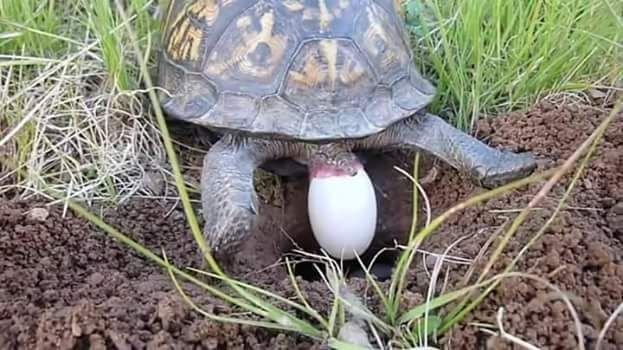
But, how actually do you take care of these delicate turtle eggs?
How to Care for Turtle Eggs?
So, what to do when you find the turtle eggs? Well, there are a few things you are expected to do when you see the turtle eggs. You can either decide to let nature handle it the way it would want to or choose to ensure that they are safe by using an incubator.
Of course, mother nature is efficient enough to take care of turtles. However, it can also be cruel at times. Turtle eggs fail to hatch many a time. It can be because of multiple reasons – unusual weather, heavy rains, too much cold, and more substantial rises in temperature.
And if you decide to take care of the turtles yourself, you would need to have access to an incubator. You can prepare an incubator yourself or choose one from third party sources.
3 Best Incubators to Take Care of Turtle Eggs
If you are not someone who can work with those DIY techniques or not innovative enough, nothing to worry about there. You can buy a few good options right away from online sources.
Here are a few great options for the best incubators you can check out.
PIVBY Reptile Breeding Box Turtle Egg Incubator
Check on AmazonOne of the popular turtle egg incubators, it can be an excellent choice for hatching turtle eggs. It comes with a transparent lid so that you can have a look at the condition of the eggs. It also has anti-skid rails to make it easy to handle and work with.
The incubator can hold up to 16 eggs. It uses the safe incubation method, which in turn improves the hatch rates. The imported food-grade material would make it one of the best options and safer for the eggs.
Zoo Med ReptiBator Digital Reptile Egg Incubator
Check on AmazonThe digital incubator would be the best option to safeguard your reptile eggs. It comes with a digital indicator and an LCD display to take care of the temperature. The pulse proportional thermostat takes care of the stable temperature regulation.
The Rigid 55 watt heating element would be yet another best option offered by the incubator. A programmable temperature alarm and built-in memory would be helpful enough in ensuring a proper care in terms of power outages.
Intelligent Automatic Incubator
Check on AmazonThe incubator comes with an easy to carry handle. The bright LED display shows the temperature. A digital temperature control option will provide you access to a control over the incubation process. You can set the temperature between 5°C to 60°C.
You can be assured of constant incubation temperature, assuring a high degree of control over the incubation process. The cardboard surface makes it rather easy and simple to use.
These are a few best incubators to take care of turtle eggs. These shall ensure that the turtle eggs are not prone to natural disruption due to weather conditions. However, if you are good at your DIY skills you can also opt for building an incubator to take care of the eggs.
Building an Incubator to Take Care of Turtle Eggs – DIY [Videos]
Like we stated already, preparing an incubator would involve using your DIY skills in making one or buying an incubator. Before you build an incubator, you would need to prepare the containers to place them inside the incubator.
Building the containers should be rather easy and straightforward. You can use a host of disposable items such as plastic containers, soil, and such waste material so that they can easily be placed inside the incubator.
The next step would be to opt for a few mixes in which you would out the eggs in. You can choose random soil and mix it well enough with moss and even plain paper towels. You can also use vermiculite, peat moss, and sphagnum moss.
One of the excellent options for a DIY incubator would be as in this video:
Now that you are aware of the role of incubators in taking care of the eggs, let us see a few tips you need to follow to take care of these eggs.
How to Take Care of Turtle Eggs?
If you are checking out the best options for taking care of your turtle eggs, the tutorial here should help you get access to the best possible options.
Here are a few items you would want to check out –
- A deli container or food container
- Water in a spray bottle. Make sure that the water is non-chlorinated
- A permanent marker
- Incubator
How would we be able to take care of the turtle eggs? Well, here are the steps involved in taking care of your turtle eggs –
- The first task you would need to undertake would be to take out the turtle eggs from the soil or holes.
- Keep the eggs somewhere safe.
- You need to get yourself a bag of vermiculite. A bag should ideally last one year or even more.
- Take the containers that you just prepared. Drill the holes inside the containers at the top for ventilation.
- Mix the equal amount of vermiculite and water and place it inside the box. Make sure you need to mix the items by weight and not by volume.
- A wrong mixture may not be conducive to the proper hatching of the eggs. A proper moisture level is a key to the appropriate hatching of eggs.
Do note that turtle eggs tend to be quite a rubber-like in nature. They are quite different from the chicken or other bird eggs. Even then, they may get crumpled or damaged if you do not handle them properly enough.
- Do note that once you have deposited the eggs, you should not change the orientation after the completion of four hours.
- The embryo develops at the top end of the egg. If you change the orientation, the embryo is more likely to die.
Once that done, insert the eggs into the incubator. Use the same orientation that you took it from the turtle nest. That is precisely why we suggested using a permanent marker. You can mark the orientation of the eggs before taking them out of the nest and placing them inside the container.
How to Move Turtle Eggs?
Moving the turtle eggs can be a massive task in itself. They are quite vulnerable, and a careless maneuver can damage them. You would need to exercise caution before moving them from one place to another.
Follow these steps to ensure that you are doing it right –
- Once you locate the eggs inside the holes, mark the top end of the eggs with a permanent marker. Marking the eggs before moving them is much essential.
- Now, carefully lift each of the eggs and move them to the container. Take one egg at a time.
- Never change the orientation. The top marked should always be on the top. No sideways or upside down. You will damage or make the embryo die.
- You can use spoons to carry the eggs.
Now, let us understand the incubation process.
The Incubation Process
The incubation process should rather be easy enough. You can either take the incubator you created with your DIY skills or the ones brought from online stores. Keep it in a warm place, and keep the lid tight. The hatch rate would be directly proportional to the incubator quality. The better an incubator is, the bright will be the chance of a higher hatch rate.
The right incubator would be the one that provides you with better control over temperature and humidity. The aquatic turtle eggs will ideally need more humidity than the terrestrial ones.
You can either opt for the low humidity or high humidity method for incubating. The low humidity method would be ideal for hatching the terrestrial turtle eggs.
Take care of the following points when incubating the turtle eggs –
- Never change the orientation of the eggs for the simple reason that we have already explained.
- Keep the temperature constant at 27-degree Centigrade.
- The humidity should be at around 80 percent.
How Long Should You Wait for Eggs to Get Hatched?
How long should you wait for the turtle eggs to hatch? That would vary from one species to another. In addition, the temperature would also be a contributing factor to decide upon the actual process of incubation and hatching.
The common species of aquatic turtles will take around 60 days to hatch. However, the temperature variation can extend the incubation period still further. In fact, experts opine that a 2-degree variation can result in extending the incubation by three weeks.
Well, if you have done everything right, you should find the baby turtles appearing from the eggs in around 60 to 80 days.
What To Do After Turtle Babies Have Just Hatched?
Well, baby turtles need to be taken care of as soon as they hatch out. Follow the careful steps here to ensure that they remain unharmed.
- Pick them up carefully and transfer them to the new container.
- Make sure you have lined the container with wet towels.
- You will need to keep the baby turtles inside the container till the egg sac is removed.
Make sure you are spraying the paper towels with water to ensure that it remains wet. It should take around a week for the baby turtles to get cleared of the egg sac.
You should take extreme care when handling them. Even though they have shells, they are still vulnerable. Once the baby turtle has been transferred to another container, make sure the remains of the eggs are removed from the incubator.
Wait till all the eggs have hatched. Once most of the eggs have hatched, and a few haven’t as yet, it would be a good idea to wait for a week to ensure they didn’t go bad. If no more eggs hatch even after a week, you can conclude that they have gone bad.
With this, we hope we have guided you well enough with regards to taking care of turtle eggs or taking care of baby turtles, the process of incubation, making of incubators and buying an incubator. Now, let us see a few common FAQs with regards to turtle eggs.
FAQs on Turtle Eggs
Having gone through the basic understanding of how to take care of turtle eggs, here are a few questions that have always bothered you and have been trying to find answers for.
What time of the year do turtles lay eggs?
A – Ideally speaking, the summers are the turtles that turtles lay their eggs. Thus the exact time of the year will be dependent on the local summertime. In the northern hemisphere, it would be around May to August, and in the southern hemisphere, it would be around November to February.
When do Red Eared Slider Turtles lay eggs?
A – A red-eared slider turtles mature in around two to four years. Ideally, a male red-eared slider matures in two to four years, and a female red-eared slider takes two to five years to mature. They would mate as soon as they approach sexual maturity, and the mating season is ideally in the months between March and July.
How many eggs do Red-Eared Sliders lay?
A – They would be able to lay at around 2 to 30 eggs at a time. They will take around 60 to 90 days to hatch.
How long does it take for a turtle to lay eggs?
A – It would be dependent on the species. They would ideally begin laying their eggs in 21 to 42 days after mating.
Are turtles born with shells?
A – Yes, they are born with shells. However, the shell would be much softer. This is because the bones have not yet been calcified. Even with the shells, they would continue to be vulnerable for at least a week.
How many eggs does a turtle lay at a time?
A – It would largely be dependent on the time of the year and species. They would lay 1 to 5 clutches in each breeding season. Each of the clutches would contain around ten eggs.
Can turtle eggs hatch in the water?
A – No. You won’t find turtle eggs hatching in water. In fact, that is the reason why a turtle lays its eggs on the ground. Even if a turtle egg is in water for a few moments, it would be dead. They would need to stay in contact with water.
How long does it take painted turtle eggs to hatch?
A – It would take around 72 hours for the painted turtle eggs to hatch. The process would ideally range between August to September.
How long does it take box turtle eggs to hatch?
A – It would be dependent on the region. In the northern hemisphere, you would find them hatching in 90 to 120 days. However, in the southern hemisphere, they would hatch within 70 days.
Which animals eat turtle eggs?
A – The exact predators that would feast on the turtle eggs would be dependent on the species of the turtles. A few animals that can eat the turtle eggs would be foxes, gulls, ravens, raccoons, crows, herons, and weasels. In fact, a few turtle species can eat the eggs of the other species.
What is the egg sac?
A – The egg sac can be seen in the turtle hatchlings. It is a soft attachment that forms part of the underneath shell of the turtle. It is commonly yellow in color. The egg sac consists of the necessary nutrients for the baby turtle. If the sac is punctured or damaged, the baby turtle is likely to die.
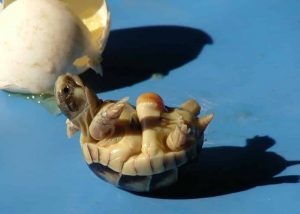
Closing Thoughts
That was how you would take care of a turtle egg and help it hatch. Of course, leaving at the mercy of the nature may be the intuitive thing, but the right tips outlined here should ideally help you get access to the correct type of care for the turtle eggs.

-
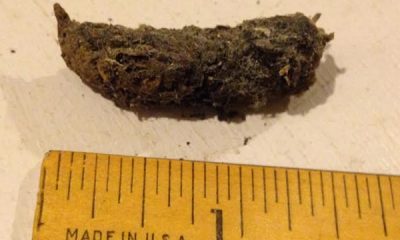
 Skunk4 years ago
Skunk4 years agoWhat Does Skunk Poop Look Like? Images & Identifications
-

 Bunny4 years ago
Bunny4 years agoHow to Get Rid of Mites on Rabbits? #NaturalRemedies #Video
-

 Horse4 years ago
Horse4 years agoHow Much Weight Can a Horse Carry? #Clydesdale #Friesian #Mustang #Draft
-

 Turtles4 years ago
Turtles4 years agoHow to Take Care of Snapping Turtle Eggs? #Incubating #Hatching
-

 Bunny4 years ago
Bunny4 years agoHow Big Do Dwarf Bunnies Get? – Amazing Facts #Images
-

 Bunny4 years ago
Bunny4 years agoHow to Potty Train a Rabbit in House? Tips on Litter Training
-

 Turtles4 years ago
Turtles4 years ago8 Basking Rocks/ Platforms for Turtles – A Perfect Guide
-

 Horse4 years ago
Horse4 years agoDifference Between Riding a Mule and a Horse

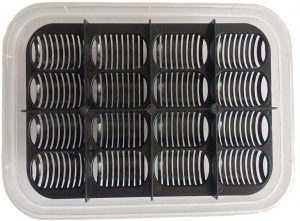
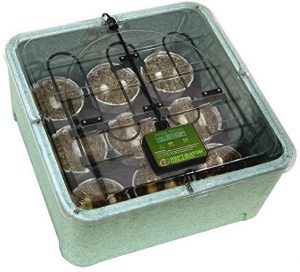


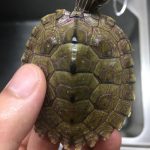






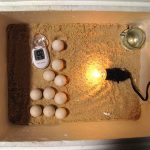










4 Comments